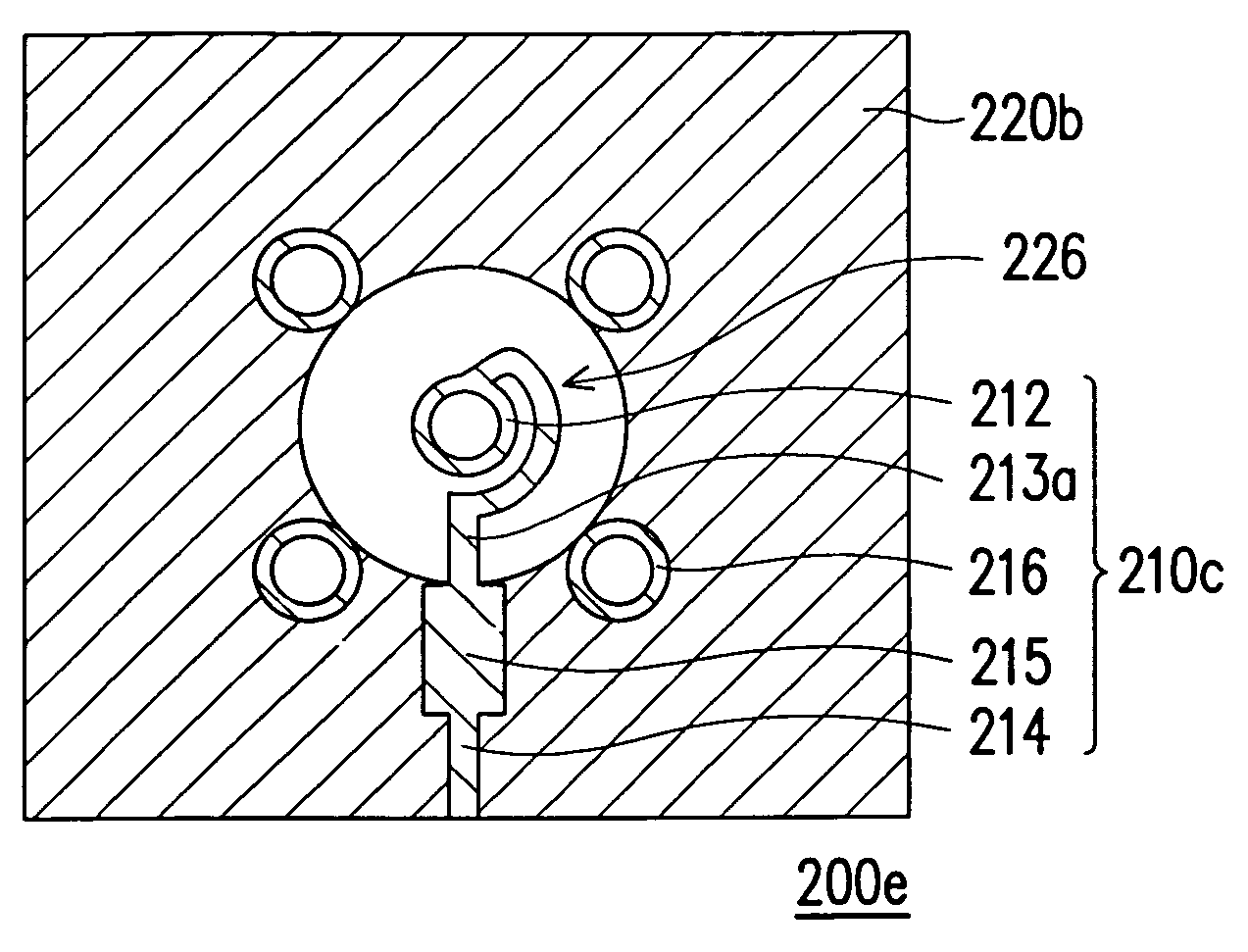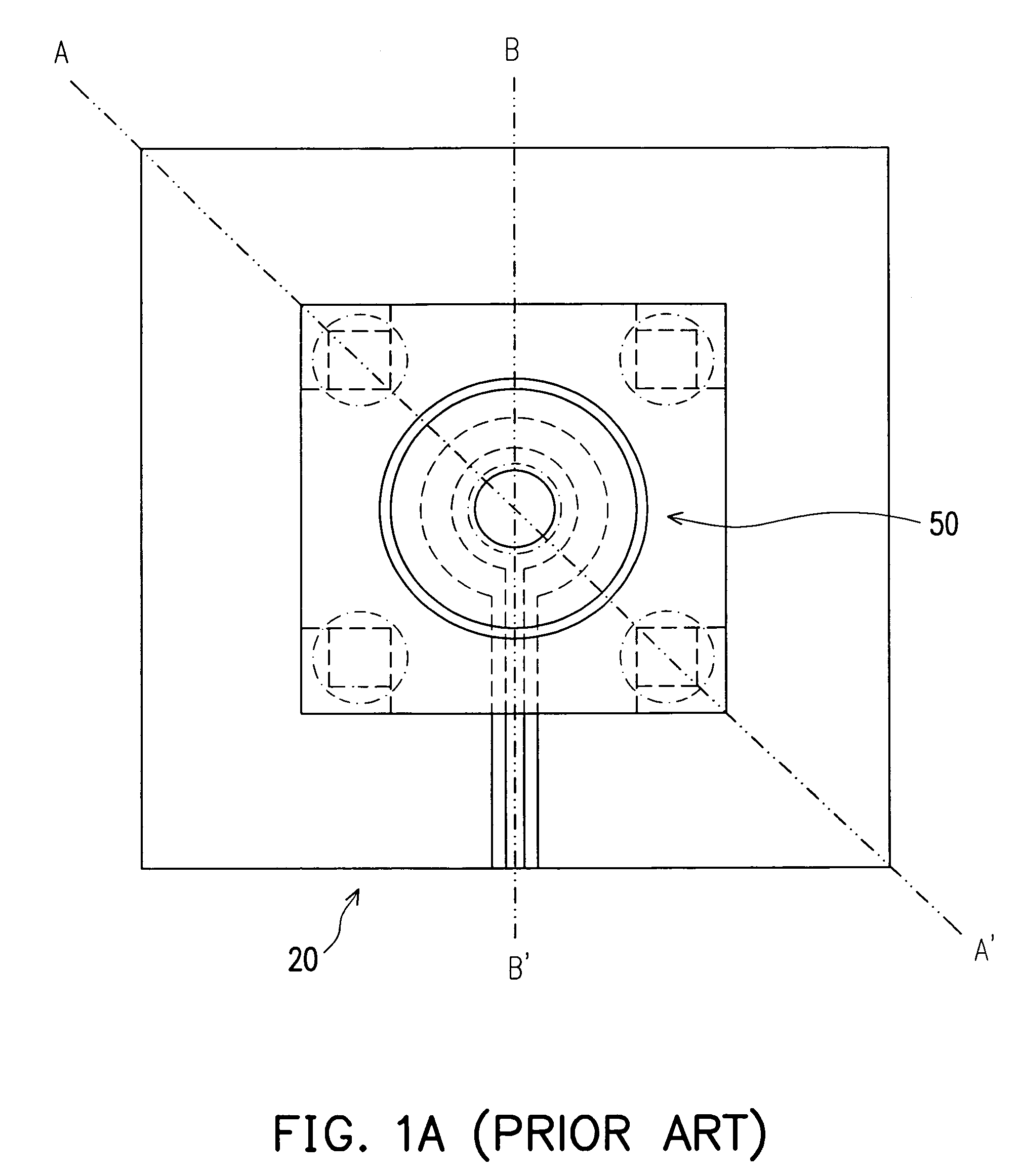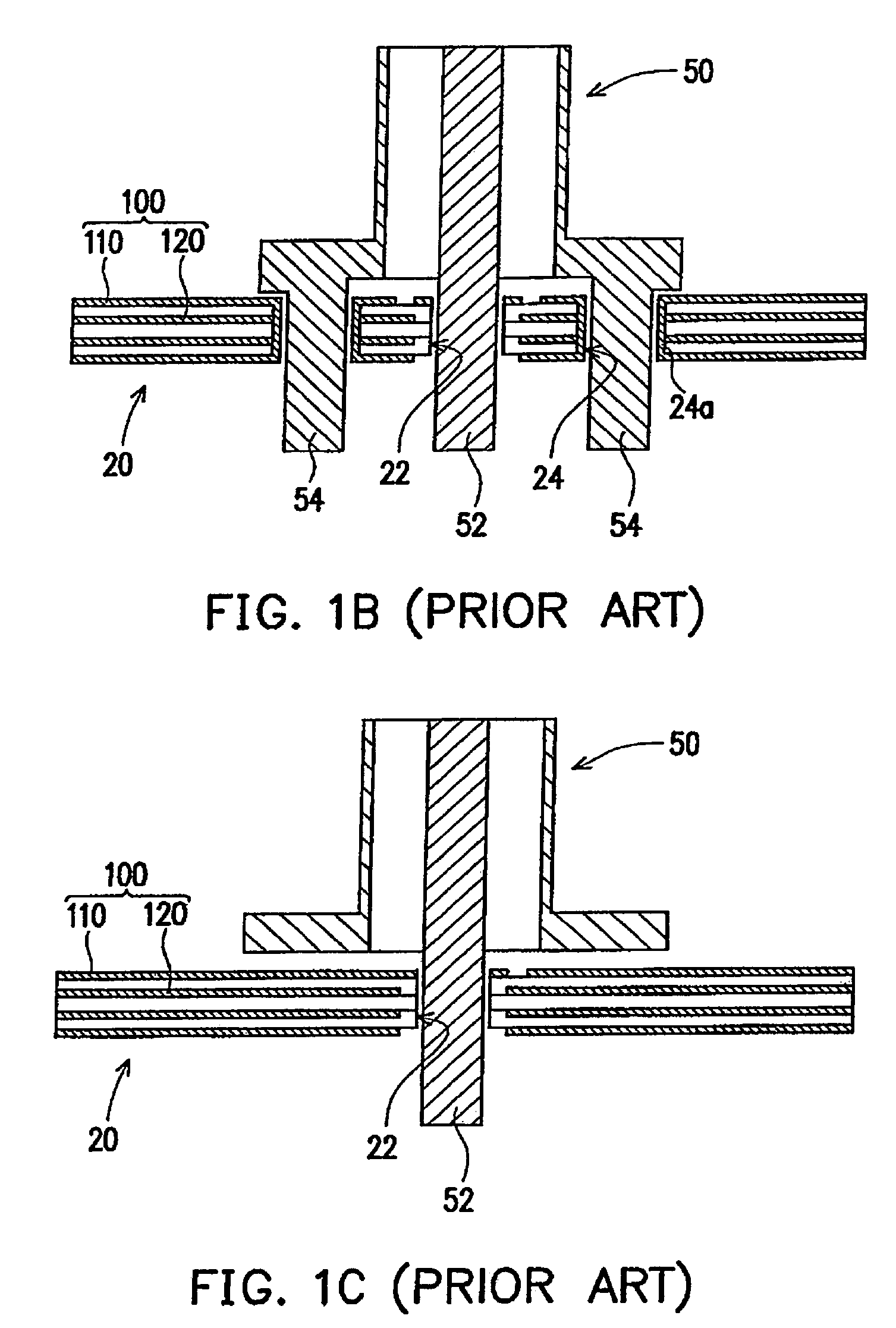Signal transmission structure, circuit board and connector assembly structure
a technology of signal transmission and circuit board, applied in the direction of waveguide type devices, fixed connections, coupling devices, etc., can solve the problems of increasing insertion loss and affecting signal transmission quality, and achieve the effects of improving signal transmission quality, improving impedance continuity, and reducing capacitan
- Summary
- Abstract
- Description
- Claims
- Application Information
AI Technical Summary
Benefits of technology
Problems solved by technology
Method used
Image
Examples
first embodiment
[0037]FIG. 2A is a top view of a signal transmission structure according to an embodiment of the present invention, FIG. 2B and FIG. 2C are top views for individually illustrating the conductive layer and the first reference plane of the first embodiment. Whereas, FIG. 3 illustrates a cross-sectional view of signal transmission structure in FIG. 2A connecting with a connector. In reference to FIG. 2A to FIG. 2C and FIG. 3, FIG. 3 illustrates the signal transmission structure with the cross-sectional views through line I-I′ in FIG. 2A. A signal transmission structure 200a of the embodiment of the present invention is suitable for connecting to a coaxial cable connector, in which the coaxial cable connector is an upright SMA connector 50 that includes a signal pin 52 and a plurality of alignment pins 54. The signal transmission structure 200a that is disposed at a circuit board 20 includes a conductive layer 210a and a first reference plane 220a. Whereas the conductive layer 210a and ...
second embodiment
[0041]FIG. 4A schematically illustrates a top view of a signal transmission structure, according to a second embodiment of the present invention. FIG. 4B and FIG. 4C respectively illustrates a top view of FIG. 4A at the conductive layer and the first reference plane. Referring to FIG. 4A to FIG. 4C, the present embodiment signal transmission structure 200b of the embodiment is similar to the signal transmission structure 200a (as shown in FIG. 2A). However, the differences are found at the conductive layer 210b of the signal transmission structure 200b having a second reference plane 218, and surrounding the signal perforated pad 212, the first line segment 213, the compensation pad 215, and the second line segment 214. The above described first alignment perforated pad 216 is, for example, constructed from a plurality of sections from the second reference plane 218. Furthermore, the second reference plane 218 can be a ground plane or a power plane.
third embodiment
[0042]FIG. 5A and FIG. 5B respectively illustrates a top view of the two signal transmission structures according to the third embodiment of the present invention. In reference to FIG. 5A, because it is similar to the first embodiment shown in FIG. 2A, only the differences are described. The first reference plane 220b of the signal transmission structure 200c in the embodiment includes an open space region 226. The open space region 226 is the non-conducting region of the first reference plane 220b. The projection of the signal perforated pad 212 and the first line segment 213 at the first reference plane 220b is located within the open space region 226.
[0043]In other words, the present embodiment can enlarge the insulating opening 224 of the first reference plane 220b (as shown in FIG. 2C) to form the open space region 226. As a result, it can reduce the capacitance between the signal perforated pad 212 with the first line segment 213 and the first reference plane 220c, and further...
PUM
 Login to View More
Login to View More Abstract
Description
Claims
Application Information
 Login to View More
Login to View More - R&D
- Intellectual Property
- Life Sciences
- Materials
- Tech Scout
- Unparalleled Data Quality
- Higher Quality Content
- 60% Fewer Hallucinations
Browse by: Latest US Patents, China's latest patents, Technical Efficacy Thesaurus, Application Domain, Technology Topic, Popular Technical Reports.
© 2025 PatSnap. All rights reserved.Legal|Privacy policy|Modern Slavery Act Transparency Statement|Sitemap|About US| Contact US: help@patsnap.com



